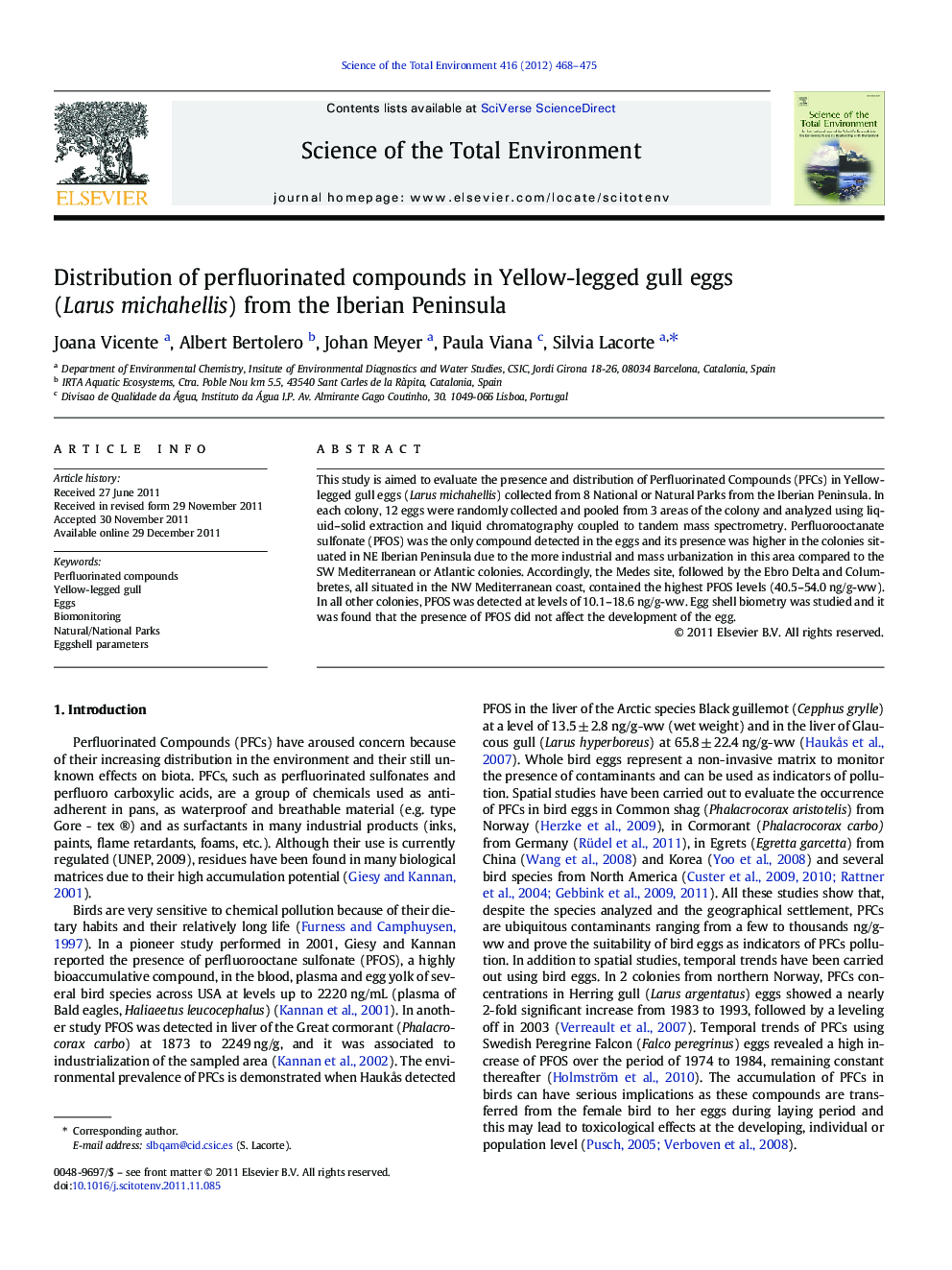| Article ID | Journal | Published Year | Pages | File Type |
|---|---|---|---|---|
| 4429849 | Science of The Total Environment | 2012 | 8 Pages |
This study is aimed to evaluate the presence and distribution of Perfluorinated Compounds (PFCs) in Yellow-legged gull eggs (Larus michahellis) collected from 8 National or Natural Parks from the Iberian Peninsula. In each colony, 12 eggs were randomly collected and pooled from 3 areas of the colony and analyzed using liquid–solid extraction and liquid chromatography coupled to tandem mass spectrometry. Perfluorooctanate sulfonate (PFOS) was the only compound detected in the eggs and its presence was higher in the colonies situated in NE Iberian Peninsula due to the more industrial and mass urbanization in this area compared to the SW Mediterranean or Atlantic colonies. Accordingly, the Medes site, followed by the Ebro Delta and Columbretes, all situated in the NW Mediterranean coast, contained the highest PFOS levels (40.5–54.0 ng/g-ww). In all other colonies, PFOS was detected at levels of 10.1–18.6 ng/g-ww. Egg shell biometry was studied and it was found that the presence of PFOS did not affect the development of the egg.
► PFOS was detected in L. michahellis eggs from 8 colonies in the Iberian Peninsula. ► NW Mediterranean colonies had higher PFOS concentration than Atlantic. ► Differences in egg shell parameters were found among colonies. ► No correlation was found between egg shell parameters and PFOS levels.
